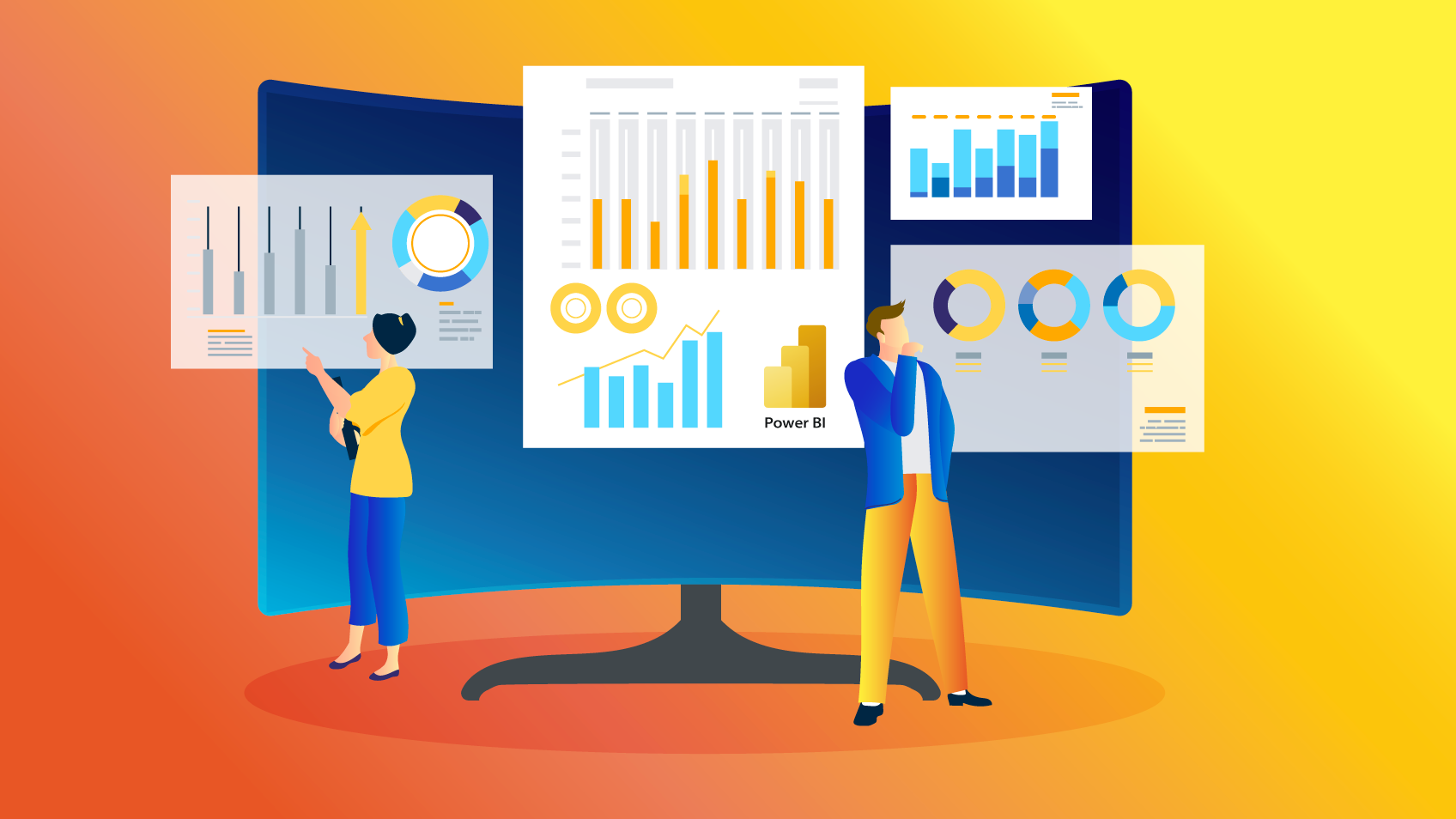In the current business world, data is a critical asset that can make or break an enterprise. To maximize the potential of data, businesses make use of powerful tools such as Power BI and Microsoft Fabric. These platforms are the linchpins of business intelligence. And when combined with Azure Data Factory, they are a powerful force for data analytics and decision-making.

Power BI: Your Business Intelligence Companion
Power BI, a product of Microsoft, is a complete business intelligence software designed to aid organizations in analyzing and share insights from their data. Power BI lets users create interactive dashboards and reports that transform raw data into actionable insights.
Whether you’re a small startup or a large enterprise, Power BI adapts to your needs. It seamlessly integrates with different sources of data and makes it easy to merge data from several platforms and databases. The intuitive drag and drop interface allows even non-technical people to produce powerful reports.
Power BI’s platform supports real-time data processing. This guarantees that you’re always working with up-to date information. Power BI offers a range of tools to present information in a stimulating and digestible manner. The possibility of sharing and collaboration reports with colleagues improves decision-making and fosters a data-driven culture within your organization.
Microsoft Fabric: The weaving of data Excellence
Microsoft Fabric is an orchestration framework that connects data from Microsoft services. Fabric is the layer that converts your data an easily accessible and usable entity. This allows companies to gain insight quickly.
Microsoft Fabric helps businesses maintain data integrity and consistency as they handle increasing volume of data. It works with a variety of services, ranging from Azure Data Lake Storage and Azure SQL Data Warehouse to Power BI and more. The interconnectedness of the platform guarantees data flow and insights from multiple sources.
The range of Microsoft Fabric is evident in its capabilities to transform data. You can use it to collect data, clean and prepare it for analysis, and make sure it is in line with your organization’s data governance policies. Microsoft Fabric is the platform that will ensure that your data is secure as well as accurate and well-prepared for analytics.
Azure Data Factory: the Gateway to Data Transformation
Azure Data Factory is another important component in the current business intelligence market. It’s a cloud-based data integration tool that lets you build, plan and manage workflows that are based on data. Azure Data Factory allows for significant insights through the orchestration of the transformation of data and its movement.
Azure Data Factory is numerous strengths, including its capability to connect to various data sources. No matter if your data is stored in the cloud or in your premises and you can connect it seamlessly to get a complete image of your entire data ecosystem. It supports batch processing, data streams in real time, and big analysis of data, making it ideal for a variety of instances.
Azure Data Factory has a visual user interface that makes it easier for developing data pipelines. Even if you are not a programer it is easy to design plans, schedules and track data pipelines. Users can be in control of data integration and self-service data preparation.
Power BI, Microsoft Fabric and Azure Data Factory: The Power Trio
If Power BI and Azure Data Factory is combined and merged, they form a formidable trio that will transform your data analysis processes. This is what they do:
1. Data Integration Azure Data Factory connects to a multitude of data sources to ensure that all your data is accessible. Microsoft Fabric orchestrates the data from various services using this data integration feature. This ensures that your data is correctly organized, cleansed and is ready to be analysed in Power BI.
2. Data Transformation: Microsoft Fabric plays a crucial part in the process of data transformation that allows you to alter your data to meet your analytical needs. Fabric makes sure that your the data is ready to be used for insight regardless of whether you are cleansing or changing data.
3. Power BI will take over once your data has been perfected and is ready. It lets you create visually appealing dashboards and reports and makes complex data simple to comprehend. The insights you gain are shared with the team members to help them make data-driven choices.
4. Scalability: Azure Data Factory can adapt to growing volume of data. Combining Power BI with Microsoft Fabric will ensure that your data is constant and reliable, even when your business expands.
5. Real-time Data Insights: With live data processing capabilities, Power BI and Azure Data Factory provide up-to-the-minute insights that are vital for making quick decisions.
Also, you can read our conclusion.
The field of business intelligence is changing rapidly and in order to remain competitive, businesses must tap into the power of data effectively. Power BI combined with Microsoft Fabric and Azure Data Factory can take your business analytics to the next level. These three components can help you to achieve stunning visualizations as well as improve consistency of data and streamline workflows. Make your data more effective by utilizing business intelligence.